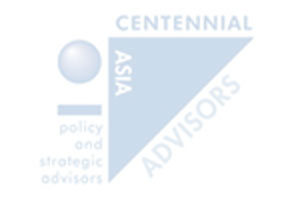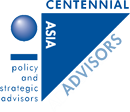Asian Insights
A summary of “Asian Insights” weekly update is published here. The full version is available through paid subscription. Please click here to register your interest. Our executive will get in touch with you.

Highlights from the CAA Weekly Table:
- Political risks: China is testing Biden. Its intrusions into the air space and waters of Japan, Taiwan and the Philippines are designed to show up the US as a toothless tiger, unable to defend its allies. But China may have miscalculated and the result is higher risk of tensions.
- Asian economies: Asian growth could see significant upside. Recent data show global demand for Asian exports firming. Massive investments by tech firms validate the view that tech demand will be powerfully boost Asian growth. In China, export demand will offset domestic weakness. New infection surges are hurting India and the Philippines. Thailand remains sickly. Robust exports and a likely upturn in investment will drive South Korea’s out-performance this year.
Asian monetary policy: Policy rates have troughed
- The results of our updated Taylor Rule model for assessing the monetary policy outlook are presented below:
| Policy Rate (%) |
Conventional policy |
Unconventional policy |
|
| China | 2020: 2.16% |
|
|
| 2021e: 2.55% | |||
| India | 2020: 4.00% |
|
|
| 2021e: 4.35% | |||
| Indonesia | 2020: 3.75% |
|
|
| 2021e: 3.75% | |||
| Thailand |
2020: 0.5% |
|
|
|
2021e: 0.5% |
|||
| Singapore | 2020: – |
|
|
| 2021e: – | |||
| Malaysia | 2020: 1.75% |
|
|
| 2021e: 1.75% | |||
| The Philippines | 2020: 2.0% |
|
|
| 2021e: 2.0% |

Highlights from the CAA Weekly Table:
Regional overview
- Don’t underestimate the risk of protectionism: The Biden Administration has signalled a tough position on trade issues. As the American external deficit grows this year and next, the US is likely to employ more aggressive trade-related measures. These are likely to include accusations of currency manipulation against Asian exporting nations, higher tariffs and the possibility of a border adjustment tax.
- A new wave of COVID infections has set back the region. Indonesia, India and the Philippines have seen caseloads rise to multi-month highs. However, vaccination rates are now likely to accelerate as nations finally receive their first tranche of the vaccines. Several countries have also expressed a willingness to open their borders so as to kickstart tourism.
- Taiwan’s economy has got off to a flying start, with industrial production soaring in early 2021. Policy makers in China, Singapore and Thailand are likely to adopt a pragmatic, data-driven approach to monetary policy which is unlikely to change markedly in the near term.
Political flashpoints – watch North Korea
- Recent media reports raised concerns about China making a military move on Taiwan sooner rather than later. We doubt that. A more imminent risk is North Korea where the economy is in crisis and the leadership desperately needs a foreign crisis to distract its people.
- On a more positive note, India and Pakistan appear to be engaged in a peace process which should reduce the risk of a flare-up between the two nuclear-armed neighbours.
Assessing Asia’s post-pandemic fiscal headroom
- India, Malaysia and the Philippines have the least fiscal headroom after accounting for the tax base, the debt ratio, the debt burden and the external debt of the economies.
- Economies with less fiscal headroom tend to encounter a higher cost of borrowing.
Table 1: Z-scores for fiscal headroom in Asia
| Economy |
Tax base (% of GDP) |
Debt ratio (% of GDP) |
Debt burden (% of revenues) |
External debt (% of GDP) |
Z-scores, The higher the better |
10Y Yields (%) |
| TH |
15.43 |
52.13 |
5.59 |
6.47 |
6.03 |
1.77 |
| CN |
15.19 |
73.69 |
4.85 |
7.13 |
2.97 |
3.23 |
| VN |
15.52 |
54.30 |
8.31 |
18.30 |
2.28 |
2.39 |
| ID |
8.31 |
39.36 |
18.43 |
5.63 |
0.87 |
6.75 |
| AVG |
12.68 |
59.46 |
15.42 |
12.15 |
– |
4.02 |
| PH |
13.93 |
57.04 |
13.32 |
17.79 |
-1.21 |
4.50 |
| MY |
10.91 |
62.15 |
15.33 |
16.24 |
-1.90 |
3.37 |
| IN |
9.50 |
77.56 |
42.10 |
13.49 |
-9.04 |
6.13 |
Source: Centennial Asia Advisors. Only 2019 data is available for Vietnam’s external debt.
